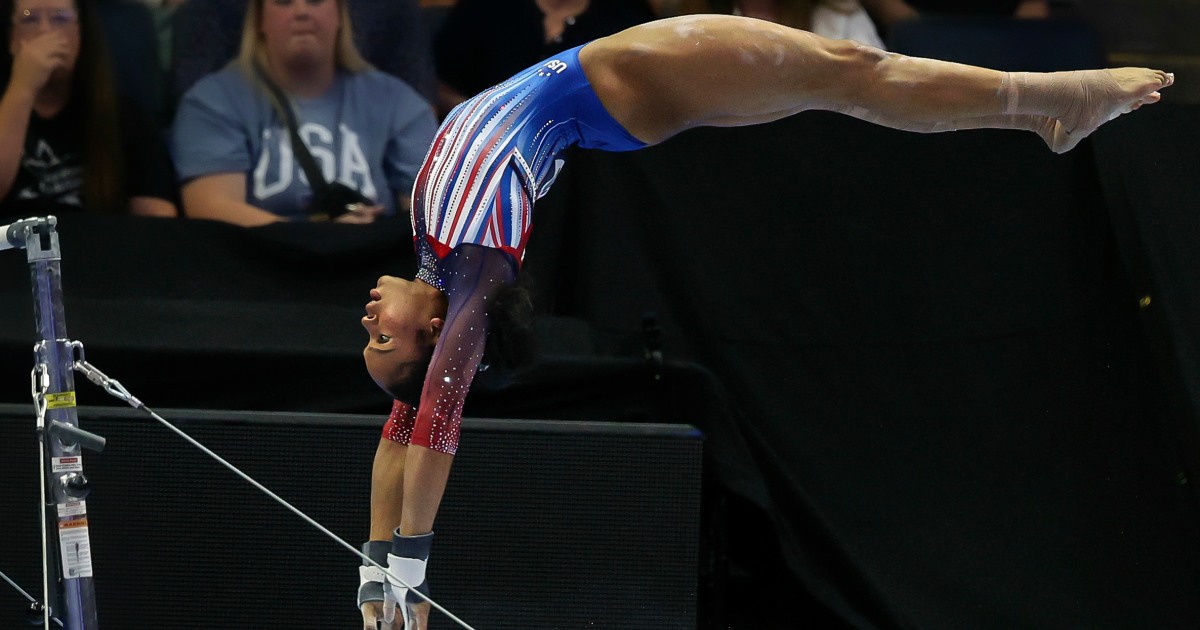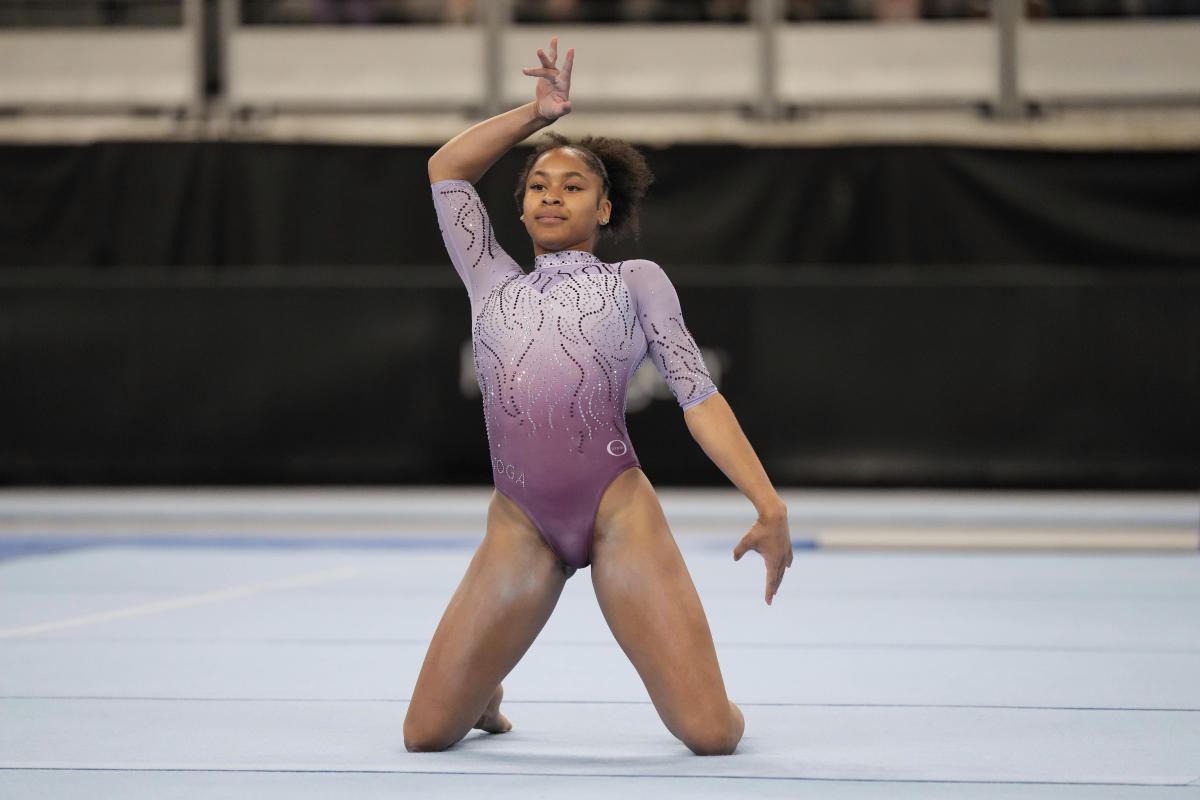Injury Prevention and Management Strategies

Gymnastics olympic trials injury – Injury prevention is paramount for gymnasts to maintain their physical well-being and excel in their sport. Implementing comprehensive measures can significantly reduce the risk of injuries and ensure longevity in the field.
Warm-up Exercises
Proper warm-ups prepare the body for the strenuous demands of gymnastics. Dynamic stretches, such as leg swings, arm circles, and torso rotations, enhance flexibility and range of motion. These exercises gradually increase blood flow to the muscles, improving their elasticity and reducing the likelihood of strains or tears.
Stretching Techniques
Regular stretching improves flexibility and reduces muscle tightness, which can contribute to injuries. Static stretches, held for 10-30 seconds, target specific muscle groups. Examples include the quadriceps stretch, hamstring stretch, and calf stretch. Incorporating stretching into daily routines can significantly enhance mobility and prevent muscle imbalances.
Proper Training Regimens
Well-structured training regimens are essential for injury prevention. Gradual progression in intensity and duration allows the body to adapt and build strength without overloading it. Adequate rest and recovery periods are crucial to allow muscles to repair and rebuild. Coaches should closely monitor athletes’ training loads and ensure they are not pushing beyond their physical limits.
Role of Medical Professionals
Medical professionals play a vital role in injury management and rehabilitation. Sports physicians can diagnose injuries, recommend appropriate treatment plans, and provide guidance on injury prevention. Physical therapists assist in developing rehabilitation programs that focus on restoring range of motion, strength, and function. Collaboration between athletes, coaches, and medical professionals is essential for effective injury management and a successful return to gymnastics.
Case Studies and Historical Analysis: Gymnastics Olympic Trials Injury
Analyzing the experiences of gymnasts who have sustained injuries during Olympic trials offers valuable insights into the causes, consequences, and recovery processes of such injuries. Furthermore, examining the evolution of injury prevention and management practices in gymnastics over time highlights the progress made in safeguarding athletes and promoting their well-being.
Case Studies of Gymnasts with Olympic Trial Injuries
- Simone Biles: At the 2021 U.S. Olympic Trials, Biles withdrew from the competition due to a mental health crisis. This case highlights the importance of recognizing and addressing mental health issues in athletes.
- Aly Raisman: Raisman suffered a torn ACL during the 2012 Olympic Trials. The injury required surgery and extensive rehabilitation, but she was able to recover and compete in the Olympics.
- Jordyn Wieber: Wieber sustained a stress fracture in her leg during the 2012 Olympic Trials. The injury prevented her from competing in the Olympics, and she eventually retired from gymnastics.
Causes, Consequences, and Recovery Processes of Olympic Trial Injuries
Injuries sustained during Olympic trials can have significant consequences for gymnasts. These injuries can range from minor sprains and strains to more severe injuries such as fractures and ligament tears. The severity of the injury will determine the treatment and recovery process.
In addition to the physical pain and discomfort, injuries can also have a psychological impact on gymnasts. They may experience feelings of disappointment, frustration, and even guilt. It is important for gymnasts to have a strong support system in place to help them through the recovery process.
Evolution of Injury Prevention and Management Practices in Gymnastics, Gymnastics olympic trials injury
Over the years, there have been significant advances in injury prevention and management practices in gymnastics. These advances have helped to reduce the number and severity of injuries sustained by gymnasts.
- Improved training techniques: Gymnasts now use more advanced training techniques that help to reduce the risk of injury.
- Better equipment: The equipment used in gymnastics has also been improved to make it safer for gymnasts.
- Increased awareness of injury prevention: Gymnasts and coaches are now more aware of the importance of injury prevention.
Despite the unfortunate injuries sustained at the recent men’s gymnastics olympic trials , the spirit of competition remains unyielding. The athletes’ unwavering determination to overcome adversity is a testament to the resilience that defines the sport. As the trials draw to a close, we eagerly anticipate the upcoming competition, where these talented gymnasts will showcase their extraordinary abilities and inspire us all.
The gymnastics Olympic trials are a grueling competition, and injuries are unfortunately common. One of the most high-profile injuries this year was to Kayla Dicello, who tore her Achilles tendon during the competition. Dicello’s injury was a major blow to the US team, as she was one of their top contenders for a medal.
Despite the setback, Dicello has vowed to come back stronger and is already back in training. Her determination is an inspiration to all athletes who have suffered injuries.
